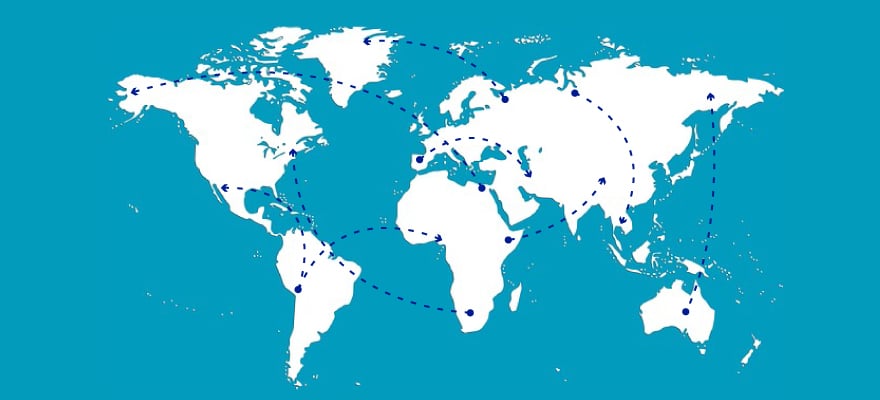This guest article was written by William Laraque who is the Managing Director of US-International Trade Services.
A friend recently sent me a copy of a patent for drones. It was applied for by Nikola Tesla...in 1898.
The upgraded Tesla Model S sedan will have a range of 315 miles with 100 kilowatt-hour batteries. Previously the largest battery size was 90 kWh. The PD100 sedan will cost $134,500, while the SUV will cost $135,500. The current Tesla line starts at about $66,000 and can go roughly 200 miles on a single charge. In other words, Elon Musk is counting on the consumer paying an extra $68,500 to go an extra 115 miles or $595.65 per extra mile of range.
Join the industry leaders at the Finance Magnates London Summit, 14-15 November, 2016. Register here!
This is the price of 'range anxiety', the main practical issue when it comes to all EVs, all fully electric vehicles. The problem with this concept is that it turns Tesla into a car for the elite, not a car for the masses. Musk considers paying this amount a privilege for a car that goes 0-60 in 2.5-2.9 seconds, depending on whether you're driving the sedan or the SUV. This speed is a privilege because although there are cars that can go faster, they tend to cost around $1 million.
Try as I may, I cannot find any practical reason for wanting to move that fast in a car unless I'm about to be hit by an oncoming train while at a railroad crossing. I tend to obey the signals at those and so this is not likely to happen.
Disruption
What happens when the disruptor is disrupted?
Scientists at the Ohio State University (OSU) have developed battery technology that could give electric vehicles more mileage for every minute of charging. In a statement, the researchers said electric cars have hit a “performance limit because of how charge is stored in conventional batteries”. They put that limit at 0.4 miles of driving for every minute of charge (though it would seem that Tesla’s P100D battery does better with about 0.6 miles at its best).
“Inspired by how living cell membranes transport proteins” in the human body, Vishnu-Baba Sundaresan and Travis Hery from OSU “have designed a thin plastic membrane that stops rechargeable batteries from discharging when not in use and allows for rapid recharging.”
Current batteries, like the popular lithium-ion ones, already have membranes but they can’t completely prevent the leakage of charge from batteries, which happens through an internal chemical process known as self-discharge. This phenomenon causes a gradual power drain from the battery. The scientists hope their invention, which they are calling an 'ionic redox transistor', will increase the capacity of “car batteries to provide up to tens of miles per minute of charge.”
Sundaresan said: “That’s still an order of magnitude away from the equivalent measure in gasoline, but it’s a place to start.”
The self-discharge, in worst-case scenarios, can generate enough heat to start a fire, as happened in the recent cases of Boeing’s Dreamliner fleet or with some hoverboards.
The researchers are using their transistor “to develop a new kind of battery in which energy is stored in a liquid electrolyte — which people can recharge or empty out and refill as they would refill a gas tank.” This would allow extending the driving range even beyond a single charge without needing to stop for a recharge. It would also provide for a mechanism to prevent the heating issues caused by self-discharge.
During lab tests, the researchers “found that their membrane reliably controlled charging and discharging in batteries powered by ions of lithium, sodium and potassium.”
The research, funded by the National Science Foundation, was published in the journal Energy and Environment Science.
My comment:
Since the beginning of time, invention has been subject to disruption. The key economic benefit is derived in many cases by transitioning the process of invention to marketability. Tesla was not born in the US, nor was the innovator at OSU described above. What makes the US great is that we take the great ideas of the world and transition them into marketable products which all the world can enjoy and which improve the livability of the world, our global quality of life.
Simone Biles was born in Ohio. Her family is from Belize. No one questioned her birthright when she won four Olympic gold medals in gymnastics for the US.
This guest article was written by William Laraque who is the Managing Director of US-International Trade Services.
A friend recently sent me a copy of a patent for drones. It was applied for by Nikola Tesla...in 1898.
The upgraded Tesla Model S sedan will have a range of 315 miles with 100 kilowatt-hour batteries. Previously the largest battery size was 90 kWh. The PD100 sedan will cost $134,500, while the SUV will cost $135,500. The current Tesla line starts at about $66,000 and can go roughly 200 miles on a single charge. In other words, Elon Musk is counting on the consumer paying an extra $68,500 to go an extra 115 miles or $595.65 per extra mile of range.
Join the industry leaders at the Finance Magnates London Summit, 14-15 November, 2016. Register here!
This is the price of 'range anxiety', the main practical issue when it comes to all EVs, all fully electric vehicles. The problem with this concept is that it turns Tesla into a car for the elite, not a car for the masses. Musk considers paying this amount a privilege for a car that goes 0-60 in 2.5-2.9 seconds, depending on whether you're driving the sedan or the SUV. This speed is a privilege because although there are cars that can go faster, they tend to cost around $1 million.
Try as I may, I cannot find any practical reason for wanting to move that fast in a car unless I'm about to be hit by an oncoming train while at a railroad crossing. I tend to obey the signals at those and so this is not likely to happen.
Disruption
What happens when the disruptor is disrupted?
Scientists at the Ohio State University (OSU) have developed battery technology that could give electric vehicles more mileage for every minute of charging. In a statement, the researchers said electric cars have hit a “performance limit because of how charge is stored in conventional batteries”. They put that limit at 0.4 miles of driving for every minute of charge (though it would seem that Tesla’s P100D battery does better with about 0.6 miles at its best).
“Inspired by how living cell membranes transport proteins” in the human body, Vishnu-Baba Sundaresan and Travis Hery from OSU “have designed a thin plastic membrane that stops rechargeable batteries from discharging when not in use and allows for rapid recharging.”
Current batteries, like the popular lithium-ion ones, already have membranes but they can’t completely prevent the leakage of charge from batteries, which happens through an internal chemical process known as self-discharge. This phenomenon causes a gradual power drain from the battery. The scientists hope their invention, which they are calling an 'ionic redox transistor', will increase the capacity of “car batteries to provide up to tens of miles per minute of charge.”
Sundaresan said: “That’s still an order of magnitude away from the equivalent measure in gasoline, but it’s a place to start.”
The self-discharge, in worst-case scenarios, can generate enough heat to start a fire, as happened in the recent cases of Boeing’s Dreamliner fleet or with some hoverboards.
The researchers are using their transistor “to develop a new kind of battery in which energy is stored in a liquid electrolyte — which people can recharge or empty out and refill as they would refill a gas tank.” This would allow extending the driving range even beyond a single charge without needing to stop for a recharge. It would also provide for a mechanism to prevent the heating issues caused by self-discharge.
During lab tests, the researchers “found that their membrane reliably controlled charging and discharging in batteries powered by ions of lithium, sodium and potassium.”
The research, funded by the National Science Foundation, was published in the journal Energy and Environment Science.
My comment:
Since the beginning of time, invention has been subject to disruption. The key economic benefit is derived in many cases by transitioning the process of invention to marketability. Tesla was not born in the US, nor was the innovator at OSU described above. What makes the US great is that we take the great ideas of the world and transition them into marketable products which all the world can enjoy and which improve the livability of the world, our global quality of life.
Simone Biles was born in Ohio. Her family is from Belize. No one questioned her birthright when she won four Olympic gold medals in gymnastics for the US.

















